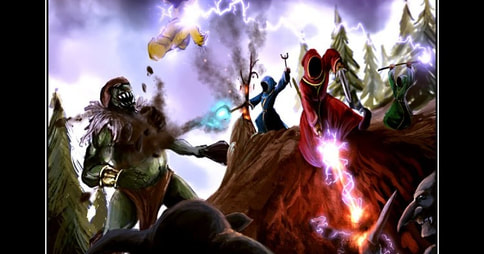 Party balance. I kind of hate this term. Maybe not the term, so much as the idea it represents. Yes, having your balanced party of a healer, a damage dealer, a damage sponge, and the person who does out of combat stuff covers all your bases. But I find that configuration so incredibly boring!! I get it, though. I really do. Having all your bases covered is the best way to ensure success. But sometimes, it’s more exciting to completely overwhelm a challenge with what you’re good at, and then wonder if you can just overcompensate for what you can’t do. With that in mind, I decided to look at some of the fun that can be had with parties that are all the same class. I find that restrictions like that really let my creativity shine. So for your reading pleasure, I’ve put together a list of some of my favorite ideas for same class parties in Dungeons and Dragons 5th Edition, using only the Player’s Handbook. 1) All Fighter Party Fighter is often thought of as the beginner class, or worse, the boring class. However, if there’s one class that could handle any feasible situation as a same class party, it would be our humble fighting man. After all, they’re the one class that gains the single most ability score increases on the way to level 20. (All classes gain five increases, with the exception of rogue and fighter who gain six and seven, respectively.) Anywhere an ability score increase can be taken, a feat can be taken instead, allowing a fighter to either round out party weaknesses, or hone their strengths further. Even if the GM doesn’t allow taking feats in lieu of ability score increases, some of their class features make them very well suited to dealing with almost any sort of violent or dangerous theat. They have the second highest hit dice, as well as the Second Wind feature. These combined grant them considerable healing capacity for themselves, since a short rest would let them regain quite a bit of HP, and then they regain use of their second wind which gives them yet another burst of HP. Things get really crazy when you consider that they can get up to 4 attacks per round, and they also possess the Action Surge ability, which lets them act a second time immediately after their turn. If the all fighter party absolutely needs to finish off an enemy with a quickness, they can all use their Action Surges in one combat round to double the amount of attacks they can make. This means that a party of four level 20 fighters can belt out 32 attacks in one turn! For Added Fun: All variant humans. Because extra versatility from an extra proficiency and an extra feat is exactly what the most versatile combat class needs. 2) All Barbarian Party The all barbarian party is similar in many ways to the all fighter party. They’re all exceptional with weapons, have a great deal of HP and also possess some short term effects that allow them to really push forward when needed. Barbarians, however, will be relying a little more heavily on their special abilities than fighters would. Rage is what makes barbarians special, and it’s simultaneously what limits what they can do, since it improves strength based attacks. This means that to deal with far off enemies, they’ll need to either throw things, or just try to close ranks. (Luckily, they do gain some abilities to make them more mobile.) One of the other benefits of rage is that it’ll also make them even tougher to defeat, making them resistant to most normal damage. Coupled with an AC that’s improved by dexterity AND constitution, and you’ll have a maniacal horde with high HP that can rampage their way through any threat. For Added Fun: All dragonborn. Call them the BARFbarians, because they’ll be puking up fire, acid, lightning, and Pelor knows what else on their enemies in their fits of rage. 3) All Monk Party Monk, in a way, is a very selfish class. Much of their abilities only benefit them, usually by granting them all manner of resistances to different effects, or a greatly increased movement speed. An individual monk is only useful in terms of their ability to move quickly on the battlefield and to tell the GM “No, that monster’s ability actually does nothing to me. :^)” Though when we carry these abilities to the illogical conclusion of making the party nothing but Monks, it trivializes a lot of the more mundane, non-combat challenges a GM can throw at the players. Noxious gas in a disease ridden warren? Breathing it like fresh air. Charming them to cause them attack allies? One turn later, they have a clear head. This makes monk an odd class out that doesn’t really excel at removing problems, but instead causing most problems to not matter to them, which is a strikingly appropriate theme. An entire party of monks is thus free from worldly concerns, allowing them to focus on greater causes. For Added Fun: All elves. They’ll already be eschewing all sorts of things like eating, knowing the languages of people they talk to, and even obeying the laws of gravity; we may as well add sleeping and needing light to see to that list. 4) All Warlock Party Warlock is, hands down, one of the most bizarre classes in D&D 5e. I’d dare to say that they’re best described as how they contrast against fighters. While a fighter has all manner of flexibility in regards to combat abilities and numerous feats, the warlock has access to all sorts of loosely related magical abilities, many of which are not combative in nature. With that said, for both story and ability cohesion, the best way to make the strengths of the warlock apparent is for all of them to have the same patron. (Incidentally, patron choice also has the least impact on what abilities a warlock has!) Once this is done, however, the plot hooks write themselves, and their sinister nature shines in all it’s terrifying glory. For example, a party of all Great Old One patron warlocks could easily spy on and conspire against the inhabitants of a city using their Create Thrall ability, or a group of Fiend warlocks could demonstrate their might to a remote village with Hurl Through Hell. From there, the insidious conspiracies can only grow. For Added Fun: All tieflings. When polite society rejected them, they found solace in religion. Not Helm, nor Lathander. No no no. They started following Nyarlathotep, to return the favor of the world giving them nothing but suffering. 5) All Rogue Party Rogue is, without a doubt, my favorite class in D&D. In 5th edition, they’re capable of all kinds of shenanigans. This propensity for silliness only becomes more apparent when you have a party of nothing but rogues. For starters, a rogue gains 5 proficiencies from their class, along with an additional 4 from their background, and anywhere from 1-3 from their race. If one source grants a proficiency a character already has, the player may then pick any other proficiency instead. This gives rogues a tremendous amount of flexibility in picking skills. Which is to say nothing about how a level 6 rogue will have four skills with double their proficiency bonus. (Further meaning that a party of four rogues will have 16 such skills!) They’re nothing to sneeze at in combat, either. Assume a four rogue party is armed with both ranged and melee weapons. If they split up into groups of two, with proper positioning, all four rogues can have sneak attack against every target. (Proper positioning meaning one duo approaches a target, allowing the other duo to make ranged attacks against it with sneak attack.) Which is to say nothing of some of the other abilities rogues have, many of which either improve their action economy in combat, or further improve their skill rolls. This isn’t to say rogue is without drawbacks, though. They’re one of the more fragile classes, and once one of them is dispatched, the rest will likely fall just as quickly. For Added Fun: All Half-elves. Because two more skills they can freely place proficiency in is precisely what the most skilled class needs. There we have it: some of the bizarre outcomes of compounding the strengths of a particular class onto itself more times than might be necessary. While party balance is a nice, safe bet to take, I’d encourage you to play on the wild side from time to time by getting together with your other players and agreeing on a same class party. It’s one thing to read and imagine what such a party would be like, but it’s another thing entirely to see it in action. Just be sure to find some way to compensate for what your party will be missing if you do! Aaron der Schaedel is often more consumed with the idea of whether something could be done, than whether it should be done. This more often than not gets him into trouble, but he always has a hilarious story to tell afterwards. For example, he’s going to include an unrelated link here to meet his external link quota, and go completely meta in explaining his intentions. You can tell him if you thought this was a good idea or not on Twitter: @Zamubei Picture Reference: http://looneydm.blogspot.com/2012/06/all-wizard-party.html 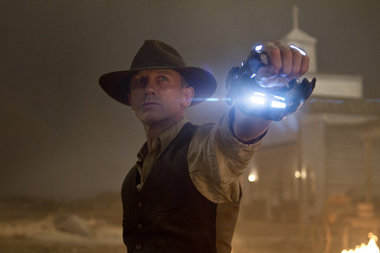 When you describe a potential game to your players, the elevator pitch is the most important thing. In the past, I’ve said ‘It’s D&D in ancient Egypt’, ‘It’s Firefly with aliens’, ‘It’s Shadowrun with psychic powers’, ‘It’s Call of Cthulhu in the 2070s’, amongst others. Now there’s absolutely nothing wrong with having, say, a D&D fantasy game. Old school. Dungeon, kill. Town, persuade. Forest, persuade and/or kill. That said, I feel that hybrid genres open up a lot more possibilities; the whole being more than the sum of its parts. And here are my personal favourite hybrid genres. 1) Sci-fi + Fantasy I feel that Shadowrun is the greatest expression of this one, which helps, because it’s been around forever, so most players have at least come across it. More recently, we’ve seen new ones, like Titansgrave: The Ashes of Valkana, that combines an alien feel with the orcs and elves vibe. Loads of potential here, and easy for players to visualise the environment. 2) Steampunk + Fantasy Steampunk is always tough. I love it, heck, I’ve cosplayed it, but it needs much more effort to explain the background to players. The easiest way is to bind it to fantasy. Just take your classic fantasy troupes and give them gunpowder, airships, steam engines and a McGuffin mineral as a stand-in for nuclear power. And now your dwarves have rifles. 3) Steampunk + Sci-fi Again, not the easiest to explain or interact with, but with lots of potential. Think Victorian tech, but with access to the stars. Space: 1889 is one of the best ones for this. Take off your science hats, though, you’ll be playing in the deserts of Mars and in the swamps of Venus. I’ve never played it myself, but just the illustrations of explorers with ray-guns, fighting huge monsters in The Mines of Mercury (or thereabouts) have always made me file it on the ‘One day’ folder. 4) Sci-fi + Gothic Grimdark. That’s it. I mean, that’s it for those people that play Warhammer 40.000. The idea is (and I’m simplifying it to a ridiculous degree) a stagnant, corrupt, decaying society, with a lot of sci-fi tropes, but overwhelmingly depressing and bleak. The universe reinforces your insignificance on a daily basis, the architecture is monumental (you have cathedrals the size of continents), religion is omnipresent, inflexible and repressing. You’re but a mote of dust in the greater scheme of things but that doesn’t mean you can’t have a lot of fun amongst the shadows. 5) Gothic + Fantasy Ravenloft. Think vampires, misty moors, ghosts and ghouls and NPC’s with eastern European accents saying things like ‘Ve never approach ze castle…. Especially at night….’ (*bolt of lightning lights up everything in sharp monochrome*). Again, grim, dark, depressing, I’ve known groups that have spent years going around Barovia (one of the locations). If you like the 1950s Universal Monster movie series, boy oh boy, is this type of setting for you. 6) Sci-fi + Detective Simple, but effective. The film-noir setting, but with hover-cars and Megacorps. If you want a whodunnit with some flavour, this would be one of my favourites. And there is so much space to bring lots of stuff from the Bogart private eye era, sleazy gin joints, shady characters, stolen artefacts. Just update it, give it a bit more flavour and put in some cyber-enhanced baddies. Job done. 7) Outcasts + Pretty Much Anything This one is a classic. Characters are (insert special class of characters that are outcasts from normal society for some reason, having most likely abilities or appearance that is different from all others) and need to interact with the ‘normal’ society. I mean, even in D&D, the players are supposed to be amazing adventurers. 8) Superpowers + Anything In any genre you can mention, give your players a super power. And now you have a game. I doubt the other people in that society are happy with someone amongst them that has that superpower, even if it is a simple one. Or maybe the players need to keep it a secret? In any case, the X-Men have been ‘protecting the world that hates and fears them’ for 50 years. They must be doing something right. 9) Contemporary + Anything Possibly a good gateway approach. New players don’t need to imagine they’re in distant Farawayland, filled with pink and purple dragons. Instead, it’s now. It’s today. And you have the ability to read the minds of blond people. And the Superhuman Containment Task Force is after you. You basically woke up, and you’re living in the X-Files. Run! What other hybrid genres have you come across? Let us know your favorites! Rui is a Portuguese scientist that, after ten years doing strange things in labs, decided to become a teacher. Then, three years ago, like he was bit by a radioactive D20, RPG’s came into his life, and he’s now juggling teaching, playing and GMing quite happily. He lives in the UK with his partner Joana, an ungodly number of potted plants, 4 to 5 RPG’s at various stages of completion (and across as many rule systems), and maps, cursed idols, evil necklaces, and any other props he can get his hands on. He’s been writing for HLG for a couple of years, and is one of the resident vloggers. He can be reached at @Atomic_RPG. Picture Reference: https://www.nola.com/movies/index.ssf/2011/07/cowboys_and_aliens_review.html 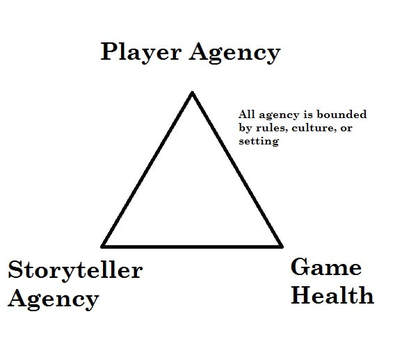 Agency is the freedom to make choices. The ability to change the world around you, reaping rewards and suffering failures. In larp, there are several aspects to this subject, the most important being the balance between Player Agency, Storyteller Agency, and Game Health. 1- Player Agency Player Agency is the ability for Characters in a larp to make meaningful choices that affect other participants and the world. Players need to feel as if their decisions matter. It is important that Storytellers not view this as handing out consequences or levying punishment. Agency is not a trap. Good story is created from results, not punishment. The actions of the Character can have negative results for the Character, but should be creating interesting stories for the Player to experience. The best games create opportunities for Players to have experiences based on their interactions with each other and the results that naturally spring from them. Plot that grows based on their actions and reactions will grow investment and the feeling of being in a real world. Players should be encouraged to create their own goals and act on their motivations within the setting of the larp. Staff should support these stories and blend them into the rest of the setting. 2-Storyteller Agency Storyteller Agency is the room in-game for the creation of NPC driven plot. Staff must be careful to use these stories to provide engaging choices for the Players, but Players must also allow the Staff leeway to create them. As touched on in On A Roll episode 10, antagonists and similar NPCs need to be given the opportunity to soliloquy, but Staff needs to be careful not to abuse the opportunity to bend the rules in the service of drama. The Staff of a larp must also communicate up front to the Players the expectations of balance between Storyteller and Player Agency. Some games can be all about the ride, the adrenaline of a series of well crafted scenes in which Players impact one other, but not the larger world or story. Others can be a grand sandbox, exploring the edges of what is and is not possible, but where resolutions are rarely as pointed and climatic. Most games fall somewhere between the two extremes. 3 - Game Health and Community Impact All Agency is bounded - either by rules, community, or the setting. The most important of these is community. All participants, Storytellers and Players, must keep in mind the engagement and comfort of those around them. Create stories that draw others in and expand involvement in interesting ways and recognize the emotional needs of the community. Be willing to both deescalate heated Character versus Character conflict and willing to step aside when you have reached your personal limits. Never allow Agency to become an excuse for toxic play. Never force another member of Staff or a Player into a scene that makes them out of game uncomfortable or fearful. Agency should also be bound by the rules and the setting. Staff should only bend rules to create more interesting stories and choices for the Players, and Players should only bend rules for game health. In both circumstances when the rules of the system are not strictly followed, all involved should be aware of the out-of-game decision to do so, being careful not to the abuse the trust of either the Storytelling Staff or the Players. Agency should be bound by the larp Setting. Players can rail against the edges of a setting and appropriate behavior within it, but should understand if those edges move slowly. Other Players and Staff are involved in and interested in a specific style of setting and play. If a small group of Players or Staff shift the setting significantly, then agency is being removed from those that wanted to play in the original version of the game. This is not to say that setting changes are bad, but that Players and Staff must communicate the level that is possible and desirable. Departing from that level requires further communication between Staff and Players. Agency is at the core of many roleplaying experiences. Participants need to feel like their choices matter, affecting the world and the other players. Players tend to prefer games that give them the greatest number of interesting and engaging choices, ideally feeling like their options are unlimited. However, Storytellers need to be given the Agency to create stories as well. Each group working cooperatively - never in opposition - to create engrossing worlds and experiences. Jason Hughes is a co-Host for the podcast On A Roll he’s the former OST for the Underground Theaters Camarilla venue, a long-time gamer and larper. 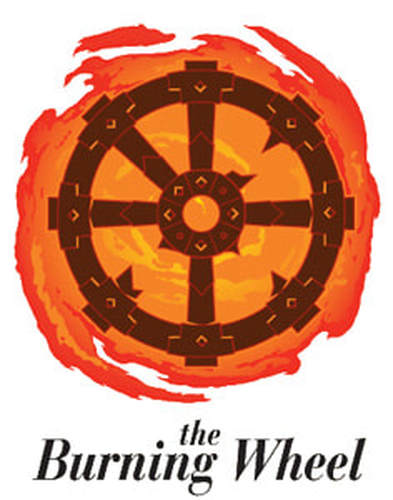 After umpteen years telling stories through the vaunted medium of roleplaying games, I rarely come across a mechanic or system that surprises me. More often, I’ll find something that differs just slightly from normal procedure, or a simplified version of another system. Burning Wheel, however, made me reconsider the way I run and play tabletop games. While the system is certainly not without its flaws, the changes it makes to the typical gaming experience place this one firmly in my favorites column. 1) Character Burning, Not Creation Other games have a lifepath system that helps you grow your character from a young age to their starting position. Burning Wheel sends you on a journey of discovery, not only of your own character, but of the setting you’ll be playing in. All players, the GM included, discuss what style of fantasy game will grace the table. Dashing privateers seeking a pathway to an uncharted island? Upjumped nobles looking to calm an agitated public on the edge of revolt? A dwarf and his comrades seeking ancient treasure? There’s a setting for you. In my most recent game, I found myself in the position of Captain of a vessel he does not own, while other characters were built as summoner/navigator, company inspector, and the ship’s doctor. Each of us chose lifepaths that placed us in our desired roles, added up the skill and traits we received from our journey, and through in some personalization through freebie points. After the mechanics were crunched, the true work began. We worked together to define the intricacies of the setting, the depths of our characters’ motivations, and the personalities that would clash aboard the vessel. These became our Beliefs and Instincts. 2) Play For Points Burning Wheel is not necessarily a cooperative game of pure storytelling. You are your character’s advocate, even as you inhabit them. When you want to add dice to a roll, you’re expected to make the case for your other skills and how they might factor into a specific skill roll. Players also fight for their Beliefs and try to find ways their Instincts will get into trouble. Why? Satisfaction, of course, but also, the player earns points they can spend by accomplishing goals and furthering the plot. Our merry band of “not-pirates” tried at every turn to use the others to earn Fate, Persona, and eventually, Deeds points. Each has their own separate uses within the game mechanics, but all are invaluable and serve also as a metric for how successful your character is. My melodramatic captain wants to explore something new (as it’s one of his core Beliefs), so when he gets the opportunity to sidetrack from the main mission, he’s going to take it. However, our navigator just wants to get the cargo back to his people, so he’s more motivated to keep us on track so he can get his points. This leads, somewhat organically, to a confrontation between the two characters, whereby each must decide how much of their true motives they wish to reveal in their arguments. Who will come out on top and get those sweet points? The dice and good roleplaying shall decide! 3) Emotional Attributes In addition to a character’s skills, traits, Beliefs and Instincts, some characters will have powerful Emotional Attributes. These are the sole province of non-humans and human characters imbued with Faith. Elves are driven by their Grief, as their eternal lives weigh heavily on them. Dwarves have their Greed, and become more miserly as they witness a world filled with physical and metaphysical things they desire. Orcs are filled with Hate, something they strive against until it finally consumes them. One of our other characters (different campaign) took the Faithful trait, which gives him access to the Faith attribute. With it, he can perform miracles and receive divine guidance. However, should his Faith ever reach 10, he ascends and leaves the mortal plane forever. Each of the Emotional Attributes has a similar character ending condition, colored by the stat in question. While powerful, these attributes are primarily meant to change the way you play the game, factoring into your decision making at each juncture. Our faithful character also took the Chosen One trait, making his Faith tests even easier, while simultaneously drawing the ire of other religious sects directly upon him. There are plenty of other noteworthy aspects to the Burning Wheel, but the above three caused me to pause and truly thing about the way I run games and roleplay characters. How do we most effectively inhabit our character’s skin while championing their causes? How does a group define a setting while adhering to concrete rules? These questions and more are answered by experiencing just the basics of this innovative system. David Horwitz is a gamer and freelance writer/editor with an obsession for exploring new forms of leisure. If you’re looking for an inquisitive mind and a deft hand, or just want to chat about gaming, contact him at www.davidhorwitzwrites.com/contact Picture Reference: http://www.mouseguard.net/book/swords-strongholds-boardgame/ 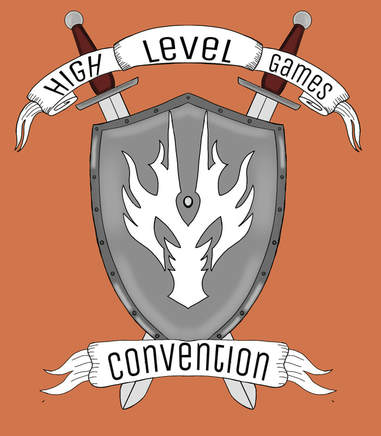 If you want to help High Level Games continue to produce great content and launch the careers of the next generation of creators, we'd love it if you stopped by our Patreon to show your support. Of course, if you'd like a little something for your hard earned money, you could always pick up one of our fine game products as well. Are you going to HLG Con this year? Hosted in exciting Atlantic City, it's going to be our premiere convention event for all the wonderful people in the HLG Nation. The past several weeks we've been hyping the LARP events we're hoping to see there, but I thought I'd take a second to share a couple of the tabletop events I'm excited to be involved with. 1) Rook's Hold Must Burn! Setting: Weird West System: Deadlands (Classic) Summary: Colonel Stewart Kingson, recently retired from the CSA, has a record a mile long. His brutalities on the field of battle are legendary, and the dark rumors that have circulated about his plantation of Rook's Hold, deep in Louisiana, could chill the blood of even the most hardened cowpokes. Agents sent to investigate the Colonel have sent emergency telegrams before falling mysteriously silent. With this new evidence, the Agency and the Texas Rangers put aside their enmity to invoke the Twilight Protocol. Activating a group of heroes they've both given patronage to in the past, the two organizations lay down a single clear mission: infiltrate Rook's Hold, discern the truth about Col. Kingson, and if he truly is a servant of the Reckoners, put him in the ground! Players: 4-7 2) Foxsong Setting: World of Darkness System: Werewolf: the Apocalypse (W20) Summary: From the moment of your Rite of Passage, your pack had a destiny, chosen by the spirit of Fox to carry out great deeds in his name. Your journeys have taken you to the far corners of the Earth. You've recovered artifacts, like the mighty Foxstone fetish. You've discovered the forgotten Caern of Sweet Wind and worked hard to cleanse it. You've charted the various threats and dangers, and after decades of work, are finally ready for the final step in Fox's plan: dedicating the Caern of Sweet Wind in his name. With only a limited amount of time, you and the other members of your pack must marshal your resources, assess which threats are most likely to disrupt the rite, and assign your forces as best you can manage. When the auspicious night arrives, you and your pack must lead the defense, protecting the prospective caern with all the mightiest relics and powers that elders such as yourselves can bring to bear! Players: 4-7 3) Crimson Masquerade Setting: Cthulhu Mythos System: Deadlands (Classic) Summary: You can't quite remember what's going on. Sometimes you're sure you were a mighty hero. People made shows, movies, and action figures about you...didn't they? Other times, you think you were just a normal person. A police officer, a nurse, a firefighter...albeit one who loved to go to conventions and dress up as your favorite characters. Right now...this past evening...you can't remember which is the real you. What you do know is that there seems to be a whole lot of innocent people running in mortal terror from some pretty horrifying monsters, and no matter which version of you is the real one, you can't fathom a world in which you wouldn't try to help in any way you can. Players: 4-7 Are you going to be there in October? Are you interested in any of these events? No matter what games you're playing, we'd love to see you out there. If you have any questions about these events in specific, feel free to contact me at [email protected]. If you've got any questions about anything else, hit us up at [email protected]! Jim Stearns is a deranged hermit from the swamps of Southern Illinois. In addition to writing for the Black Library, he puts pen to paper for High Level Games and Quoth the Raven. His mad scribblings can frequently be found in anthologies like Fitting In or Selfies from the End of the World, by Mad Scientist Journal. Follow him on Twitter @jcstearnswriter, or listen to Don, Jon, & Dragons, his podcast. Picture Reference: https://hlgcon.com/ 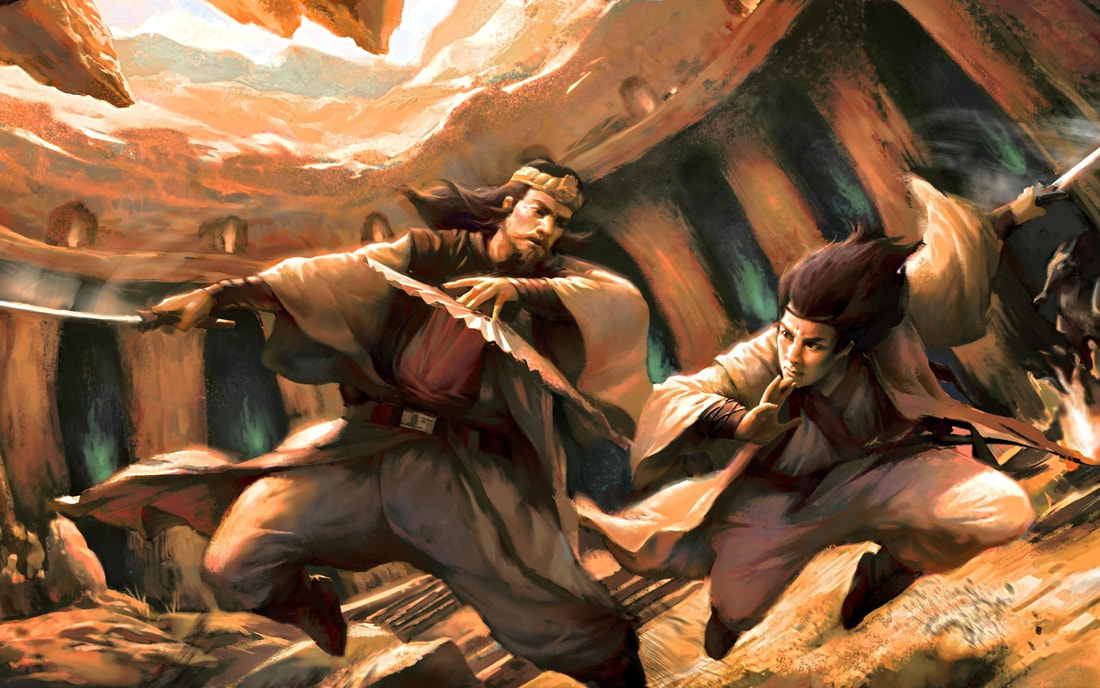 Interested in the weaponless techniques martial artists use? Given you are the Game Master, knowing key martial arts moves can greatly expand your storytelling through reliable details. There are several basic moves that any fighter can make great use of to turn the tide of the fight in their favor. Let's lay them all out. 1) Punches/Hand Strikes Knife Hand: Commonly known as the "karate chop", this is done by striking with the pinky side of an open hand. The palm is either up or down. It targets the neck, kneecap, wrist, etc. Devastating for an opponent, but keeps the attacker's hand safe from injury. Palm: The entire hand can be either open or have the fingertips folded. You thrust out to hit with the bottom of your palm. Good target areas include the nose and jaw. It isn't too damaging, but it throws an opponent off balance. Hammerfist: Use the "padded" bottom of your clenched fist and swing as though you're wielding a hammer. It's highly effective against the back of the skull, the nose, wrist, etc. Straight Punch: Also known as a "cross,” the straight punch packs a good deal of power. It's thrown using the rear hand, and it can be used to target numerous areas from the head to the torso. This move is fast and can render an opponent dazed and gravely injured. 2) Elbow Strikes Downward Strike: With this, your elbow is brought up as high as possible, then brought down in again and again, in rapid succession. It's a dangerous technique as it mainly targets the skull and the back. Rear Strike: Best used when an opponent is coming from behind, your elbow is thrown backwards, targeting the ribs, head, etc. Front Strike: A common move that has you swinging your elbow forward. It's best used to immobilize an opponent while grappling. 3) Kicks/Knees Front Kick: One of the most basic moves of them all, you'll typically strike an opponent with the ball of the foot. It's useful to get an opponent to back off as it targets the groin, knees, abdomen, and more. Roundhouse Kick: As common as the front kick, the roundhouse move is fast, allows for incredible range, and packs great power. You'll swing your leg sideways in a circular motion, attacking numerous areas from the head to the knees. Straight Knee: This involves thrusting the knee forward and up. Generally, this move targets the head, thighs, hips, etc. The speed behind the move helps give it greater power to unbalance an opponent, which allows you to control the fight. Flying Knee: When your opponent is injured and you're going in for the kill, use this move. You rush forward to land a swift, potent knee to the head. The momentum can knock anyone out. 4) Chokeholds Air Choke: This move has you compress the trachea (windpipe) to cut off oxygen to the lungs. It takes a good amount of strength to successfully pull this move off. Also, it takes some time (2-3 minutes) for an opponent to pass out. Blood Choke: When done right, an opponent can lose consciousness within seconds. You press on the carotid arteries, restricting blood flow to the brain. It's doesn't require too much strength to accomplish this. The moves laid out above are all seen as basic, yet integral parts of martial arts. Any true warrior will have these mastered and ready to use the next time they face off against any foe. Game Masters, equipped with key features and mechanics of basic martial arts, enrich the game and lend credence to fights in any TTRPG. Jason Maine is the founder of FullContactWay, a blog dedicated to provide best martial arts advice and information. Jason helps his readers with martial arts training by sharing personal tips and thorough research. Check out fullcontactway.com to get more about Jason’s work. You can find him on Facebook, Pinterest or Twitter. Picture Reference: https://tobiasmastgrave.wordpress.com/tag/martial-arts/ 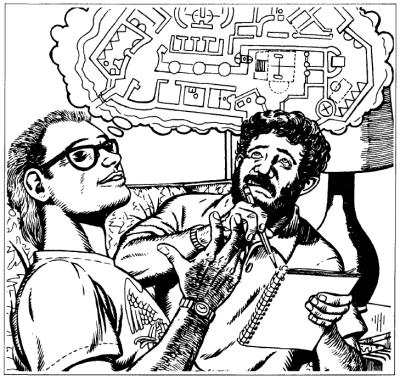 If there’s one aspect of our hobby that I truly adore besides the immersive interactive storytelling, it’s maps and miniatures. I’ve thrown an inordinate amount of money at plastic minis and vinyl wet erase mats, spent an inordinate amount of time lovingly painting every small detail on a Reaper or Heroforge figure, and wasted an inordinate amount of ink crosshatching around the edges of a map I’ve drawn just to make it pop a little more. Tactical combat and terrain can add a lot to a battle, and absolutely nothing elevates the aesthetic of a game to the next level like a really cool looking map. However, the fact of the matter is I don’t need maps and minis, no one needs maps and minis. As awesome as I think they are, there’s also plenty of valid reasons not to use them at all. The game flows a lot better from narrative to combat or vice versa without the giant speedbump of having the set up minis and possibly draw a map in between. If you prefer to draw your maps beforehand, then not using one obviously cuts down on prep time. Combat moves a lot faster and bogs down less as players focus more on what they’re actually going to do than on counting spaces on the board. It forces players to pay attention more as they can’t simply glance up at a map when their turn rolls around, and players will also naturally start using their environment more, thinking in three dimensions without having a grid to tell them expressly where they can and can’t go. Eschew the map, and you’ll see more innovation from your players than you ever have before, that’s a promise. Unfortunately, in my years of running games at conventions and local game stores, I’ve still met far too many gamers who think of gaming without a map as an inconceivable occurrence. I’ve seen people deride it as “playing ‘Mother May I’ with the GM” to simply assuming they won’t be able to keep track of what’s going on without ever giving it a shot. Well, there’s a way to do things and a way to do things, right? Lots of people talk about doing it, but guidance on actually making it happen is sparse. As a Game Master who’s run many successful Theatre of the Mind games in just about every conceivable system from 5th Edition, to Pathfinder/3.5, to Star Wars Saga Edition I’m hoping to show you how easy it is to add a versatile new tool to your GM’s toolbox. 1) You Need Your Players’ Trust This should go without saying, a good Game Master should possess their players’ trust regardless, but when there’s no communal visual aide and the table is relying on what’s in your head, it’s absolutely crucial. They need to know beyond a shadow of a doubt that you’re not going to use this as an opportunity to screw them or give yourself an advantage. Organically, this comes with time, but I’ve been able to bring players I’ve never gamed with onboard with a simple mission statement: assuring them that as the GM I’m on their side, I want them to succeed as much as they do, and I’m simply eschewing the map so the game will flow a little better and offer them more options than being confined to a grid. If I think it will be a particularly hard sell, I’ll even offer to go back to maps and minis if they try it and don’t like it. By following the rest of the rules on this list, I usually have a group of true believers by the end of the session. 2) Handwave Distance That might sound like sacrilege, but hear me out. Does anyone actually care if the goblin is precisely 15, 20, or 25 feet away? No, they care about whether they can reach it in one move action or not. When is the last time you encountered a character built for ranged combat that couldn’t shoot across an average sized battle mat without leaving the first range increment? I’m not suggesting that you ignore distance entirely, it’s valuable in certain situations to help make educated guesses. What I am saying however is that in most circumstances, precise distance is not necessary or even useful information. My rule of thumb (and I always make sure my players are aware of this) is that any creature I present in an encounter can be reached in one move action, unless I specifically say otherwise. The only time I will actually specify distance is if there’s something I specifically designed to be difficult for the melee guys to get to, or an element meant to provide something for the ranged guys to contend with, for instance a mage 80 ft. away up on a 10 ft. high ledge. Unless a fight occurs in a very small encounter area, near the door, or the tanks have specifically wheeled the enemies around, I usually rule that Flanking requires two move actions, one to actually reach the creature and another to maneuver behind it, as that’s the way it usually shakes out on a battle mat anyway. It usually takes about 15 - 20 feet of movement to circle all the way around a medium sized creature on the grid, more if you’re playing Pathfinder/3.5 and are trying to do so at a safe enough distance to avoid Attacks of Opportunity. Having to travel any appreciable distance to get to the creature makes it infeasible to do in a single move. (Though I may be inclined to cut them some slack if they’re willing to risk the AoO or Tumble through the creature’s space) At some point, you will undoubtedly encounter a player who absolutely insists they need to know how far away something is, or some other specific measurement. When that happens, I’m going to teach you a phrase that will make your life significantly easier. Learn it, practice it, remember it because it has served me well these many years. “What are you trying to do? The answer is probably yes.” Looking for reasons to say yes to your players is a completely different piece of GM advice, but that probably yes part goes a long way to engender trust and ensure to your players that you’re not trying to use the maplessness to unfairly rule against them, as well as nip in the bud the “Mother May I” mentality I mentioned earlier. The above phrase came to be because once during a game I spent a minute or two debating with a druid player Wild Shaped into a big cat who swore up and down he needed to know how far away the Shambling Mound was. So I hit him with the phrase. It turned out he was trying to figure out if he could gain the benefits of the cat’s Pounce ability. Again, he didn’t really care how far away the Mound was, did he? What he really wanted to know was whether or not he could Pounce. He hadn’t joined the fray yet, there was no reason to deny it to him, so of course I said yes. That’s not to say I would’ve let him Pounce repeatedly or Charge repeatedly, however, at least not without moving back out and risking an Attack of Opportunity. 9.9 times out of ten, what the player wants to do isn’t going to break your carefully designed encounter, and for the 0.1 times it does, honestly the player probably deserves the easier encounter for their ingenuity. 3) Put Players First There’s going to come a time when a player has a different idea of the situation in their head than you do. When situations like that occur, as long as their interpretation is reasonable, it’s always best to give the player the benefit of the doubt. In six months you probably won’t remember or care about the discrepancy, but it will help every player feel more comfortable without a map and not feel as though they need one to “prove their case.” The key phrase is as long as their interpretation is reasonable.” I.e. don’t let them cheat either. With me, this used to happen a lot if I tried to make an attack against someone who was still in the hallway. “I haven’t entered the room yet.” Over time, you’ll learn to mitigate situations like this by asking for specifics, such as “Is everyone walking inside?” before starting the encounter. If they’re looking for traps, ask them how they’re looking for traps. If they don’t specify they’re crawling on the floor, then they have to make a save against the burning hands trap three feet off the floor if they don’t see it. If there’s a pit in the center of the hallway, ask them how they’re walking down the hallway. If they don’t specify hugging the wall, then they’re not. Ask if they’re walking single file or two abreast to figure out who falls in, etc. Since I’ve gotten in the habit of asking for specifics, this type of situation arises exceedingly rarely anymore. Make sure that every important facet of a room, terrain, or combat encounter is included in your initial description. (Besides traps and things meant to be a surprise, of course) Nothing is going to piss players off more than a Barbarian attempting to charge an orc only to hear, “Oh! You can’t, there’s a giant pool of water in the center of the room” or “Oh, I forgot the floor is covered with ice, make an Acrobatics check.” If you’ve been playing with your group for a while, you might be able to get away with that once or twice, but either way, it makes it seem like you’re treating them unfairly by pulling stuff out of thin air. On the other hand, if your players suggest something, such as, “Are there any chandeliers in this room?” If it makes sense, go ahead and throw it in! Always follow the Rule of Cool, your players will love you for it. 4) Use The PCs To Track The Monsters’ Positions How do you keep track of where everyone is in Theatre of the Mind? Simple. Tordek, Regdar and Mialee (the old 3.5 iconics just don’t get enough love anymore) are fighting four goblins. Tordek runs up and engages one of the goblins in melee. Regdar runs up and engages a different goblin in melee. A third goblin attacks Tordek in melee while the fourth stays back with a bow. So what’s the situation look like? You have two goblins on Tordek, one on Regdar, and one standing in the back. If Mialee wants to Magic Missle one of the goblins, you can just ask: “Do you want the one on Regdar, one of the ones on Tordek, or the one with the bow?” Tracking hit points for them isn’t very difficult either. You can mark them however you like, Goblin 1, 2, 3, and 4. Goblin A, B, C, or D. Carl, Bob, Stu and Hoseface Larry. You just need to remember who went to Regdar, who went to Tordek, and who’s got the bow. When I have trouble keeping track mentally, I notate it in my notes like so: Tordek C (7) Regdar B (7), S (4) Mialee HL (7) I usually track it in the same place I do initiative. As the fight progresses, circumstances will arise that will help your players more easily determine the target they want: “Do you want an injured one or a healthy one?” “Do you want the one that Tordek just hit or the one Regdar knocked prone? 5) Make Combat Visceral “Your arrow hits, the orc takes five points of damage” might cut it when using maps and minis, but that’s largely because the dynamic at work is that of a board game. A large part of the fun comes from trying to outmaneuver the enemy and use the board to their advantage to stack the encounter in their favor. However, in Theatre of the Mind, the players’ main vector for entertainment is their imaginations, and as the one who acts as narrator and sets the stage, it’s up to you to make what they imagine as entertaining as possible. There’s been a lot of advice written about not being too florid with your combat descriptions. It’s all crap, all of it. Maybe don’t write a five page soliloquy for every kobold that dies as they breathe their last, pleading to the kobold gods for forgiveness, but don’t be afraid to inject some passion into the combat either. The orc does not miss the fighter with his axe. “The orc’s axe howls through the air in a downward slice, but the fighter deftly twists his sword around to catch the blow on the flat of his blade as he plants a boot in the orc’s stomach, forcing him back. The zombie doesn’t get hit by the warhammer. “Its pallid form shudders beneath the dwarf’s hammerblow, its spine separating with a sickening crack as the top half of its body sloughs to the earth in an unnatural contortion. With grotesque motions it pulls itself back together and stumbles forward to redouble its assault.” This viscerality is one of the most compelling things about Theatre of the Mind. As much as I try to evoke this same experience when using minis, it’s way too easy for me to get bogged down in the pedantry of trying to keep track of position, staying mindful of each monsters abilities, and trying to remember which health tally corresponds to which mini. Sometimes I’m just grateful to get a mini off the board and be done with it. Theatre of the Mind lifts a lot of that mental strain and just lets me focus on what’s going on in the encounter. If you can evoke a vivid enough image in your players’ minds, if they can see the cutting arcs of blades and the flashes of spellfire, hear the ring of metal and the earth crunching softly beneath their feet, it will be vastly more entertaining than watching a bunch of tiny statues stand around. 6) Resolving Area Of Effect Attacks This is admittedly the trickiest part of playing in this style, and even I have been known to break out a map from time to time if there’s a big dragon battle coming up. It’s far from impossible however. The 5e DMG has a nifty equation to help when this situation arises, but I think I have a better way. Dude, you’re the Game Master. Just do what you do a hundred times a session and make a call. If you’ve followed my other steps and properly engendered trust in the players at your table, they have no reason to doubt you when you say that the Dragonborn’s breath weapon can hit two of the eight flying kobolds. If they do disagree with you, hear them out and if it’s reasonable either amend your call or explain to them why you came to your original decision. This method might sound a little flippant, but there’s a couple bits of common sense that I use to inform the situation. In the case of something like Fireball, creatures are usually going to have about 5-10 ft. of space between them, including players if you’re using PCs to mark positions. Even dumb creatures will instinctually stick together for protection, but they’re not going to pile on top of one another and invade each other’s sword swinging space without a deliberate reason. Usually, you won’t have to worry about players being caught in the blast as most players will place their AoE behind the enemies to catch them in the very edge and spare the friendly melee. (It’s an exploit used every day on the battle map and there’s no reason to deny it to players here) If something like Flanking or odd maneuvering places a player behind the line of enemies, you’ll know and be able to adjudicate accordingly. A Cone Effect will always catch whatever’s in front of it unless the player specifically maneuvers to avoid hitting their teammates, which may require going adjacent to the melee depending on the circumstances. Anyone who’s ever tried to run a Blue Dragon boss fight on a battle mat will tell you that a Line Effect will almost always hit precisely one target, unless they specifically maneuver to line it up like a billiard shot, in which case it might get two. Conclusion The point of this article is not to convince the reader to throw away their maps and minis, it’s to hopefully add a powerful, versatile tool to every GM’s toolbox that can be alternated between as the need arises. Each style has its pros and cons, and getting comfortable with both can help elevate the Game Master’s quality of life to the next level. It’s daunting at first, I know, I too once played with only maps. When I finally took the plunge, I found an exciting new way of running my games that made them flow more freely than they ever had before. Try it, just once. We can always go back to maps and minis if you try it and don’t like it. Chaz Lebel is a fiction author, freelance writer and member of Caffeinated Conquests, a YouTube channel dedicated to nerd comedy and tabletop gaming. He and his team once produced some promotional videos for High Level Games that they probably wish they could forget. Chaz can be found on Twitter @CafConIsOn Image Resource: https://forum.rpg.net/showthread.php?686046-Do-the-BECMI-books-have-the-same-art-as-the-Rules-Cyclopedia/page2 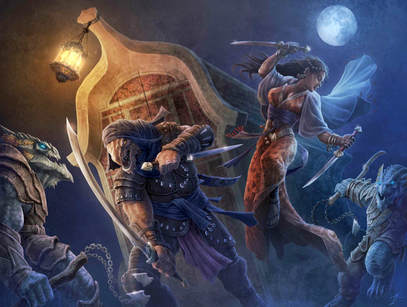 The Vistani are one of the truly unique elements of Ravenloft, but the familiar tropes of their wagons, evil eye, and card reading can become stereotyped and stale, getting in the way of making an encounter with them a truly memorable and unique experience. To make matters worse, their association with the real-life Roma can lead to unfortunate stereotypes of a people that have suffered from cultural appropriation and marginalization. Below are some options for bands taken to the edge of what it means to be Vistani, stretching the limits to create truly unique encounters far from any real-life association. 1) The Caliglia (Kamii) Vistani normally travel in cyclical routes, but what happens when one of those routes refuses to stay still? In 590, one band had just caulked their wagons to ferry themselves across the Musarde when the Grand Conjunction hit, and they were all swept out to sea! Reading the cards for their fate, their Raunie declared that they must remain on the water until their former route returns to them. The Caliglia traded their wagons for sloops, with which they escort ships between the various seas of the Core and beyond. To avoid static burn, they refuse to set foot on land for longer than a few hours, and always return to the sea before the sun sets. As part of the Kamii tribe, they have turned their metalworking trade to maritime crafts: nails, braces and other ironworks that protect vessels, compasses that predict the weather, and magic cutlasses that draw power from the sea. 2) The Valstike (Corvara) The Valstike tribe roam the lands extolling the virtues of the asylum of Dominia, selling crafts created by inmates, and offering to relieve families and communities of the burden of caring for the feeble minded, insane, or incorrigible. They don’t openly offer outright kidnapping as a service, but some have read between the lines and struck a private deal. If an individual is violently mad--or inconveniently sane--the Valstike excel at live capture, even before resorting to their potent poisons or powerful magic. Their padded vardos have a mild pacifying aura, a variety of restraints, and coffin-sized hidden compartments if necessary. 3) The Biskrem (Vatraska) Only in the topsy-turvy chaos of Vechor could the land change so quickly that Vistani can fulfil their obligation to travel by staying still. The Biskrem run a popular rural inn called The Sundowner (good quality food and rooms, fair prices), that generates a shared unreality wrinkle* among guests that drink their unique brandy. The radius varies depending upon the number of guests, and causes the surrounding landscape to resemble guests’ homelands. The Vistani fix native dishes for the guests out of local flora and fauna that appear when the land changes, and frequently speak of having “traveled,” even though the “camp” is a stationary building. Such an island of sanity is even more popular among outlanders from beyond the Mists, who frequently have vivid dreams of visiting their homelands, and even learn about current events. 4) Lunadd (Canjar) Scholars have wondered, if Vistani are compelled to move in fixed cyclical routes, how do new domains get added to the routes? The answer is found in a rarely mentioned family of the Canjar, whose strange fate allows them to visit each new domain as it appears, BUT at the cost that they can never go back to a domain after leaving. They sell their information to other Vistani during Lunaset, brokering for the supernatural power to add the new domain to routes. Lunadd cannot navigate the Mists per se, being locked on a course to visit each new domain as it appears. To compensate for this loss, and to assist with their mission, they have the gift of speaking the language of anyone they touch. 5) Kruug (Equaar) Hinted at in Van Richten's Arsenal, this singular family of Vistani are tied to the lost royal family of Velkaarn, and seek to restore the Bloodknife to its reincarnated owner. Like other Equaar, they have no wagons, but also stand out for only training truly wild animals, such the wolves and raptors that accompany them. Kruug trained animals despise the undead, and never fall under the sway of an undead darklord even if their creature type would normally be subject to a lord’s control. It's said that once the vampire lord Velkaarn is no more, the Kruug will return from isolation in the Mists. If these legends are correct, the Kruug may be the first Vistani family to willingly undergo ritual static burn. 6) Golurn (Naiat) As the domains on their route became increasingly urbanized, one clan left their vardos behind as they prowl the streets of Paridon, Nosos, and other large cities. Upon arriving in a new city, the Golurn spread out fast, darting through alleys solo, or in groups no larger than four. They find good places to perform, or do small chores, using the subtle charm of their heritage to ingratiate themselves. Golurn children and elders are always accompanied by adults who look after them and involve them in the task at hand. Anyone who threatens one of them finds the others are never far away, but those who indulge their presence find their spirits lifted, their minds awakened; far more value than that of any coin they leave with. Perhaps one of the most important elements of any encounter with a people as mysterious and unique as the Vistani is that it should fulfil multiple roles in the story. Atmosphere is always one of those roles, but the above are also intended for situations where the heroes need a challenge, or refuge, or information, or encouragement, or tools. If the heroes really do just need their fortunes told, or passage from one domain to another, consider alternatives to the Vistani from time to time, to help avoid making these powerful and mysterious people into a backdrop for the scene change. * Unreality wrinkles are a feature of Vechor described in the Nocturnal Sea Gazeteer, a netbook hosted by the Fraternity of Shadows. Leyshon Campbell has been playing and writing for Ravenloft for over twenty years, from the Kargatane's Book of S series, playtesting D&D 3E in a Ravenloft campaign, to the ill-fated Masque of the Jade Horror. He married his wife on Friday the 13th after proposing to her on Halloween. By tradition, the first story read at birth to each of their three children was The Barker’s Tour, from Ravenloft’s “Carnival” supplement. He is currently running the “Queen of Orphans” Ravenloft campaign on Discord. Picture Reference: http://thecampaign20xx.blogspot.com/2016/09/curse-of-strahd-running-final-battle.html 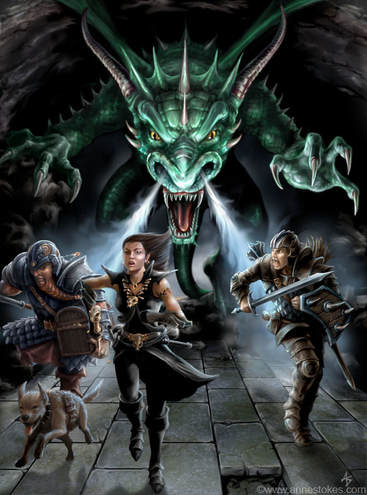 If you want to help High Level Games continue to produce great content and launch the careers of the next generation of creators, we'd love it if you stopped by our Patreon to show your support. Of course, if you'd like a little something for your hard earned money, you could always pick up one of our fine game products as well. “Extinction is the rule. Survival is the exception.” -Carl Sagan RPGs all boil down to a simple formula: the GM presents a conflict, and the players work to resolve it. When Walter Bradford Cannon described the fight-or-flight response, he was describing two of the three basic strategies not just of survival, but of conflict resolution. (Survival is, of course, the ultimate form of ongoing conflict resolution.) About twelve or thirteen years ago, when I was sitting down to think seriously about how to run and play my games better, I found it helpful to examine these basic survival strategies, and how they relate to RPG interactions. 1) Fight (Or Opposition) “He pulls a knife, you pull a gun, he sends one of yours to the hospital, you send one of his to the morgue.” -Jim Malone (The Untouchables) The most basic form of conflict resolution PCs are familiar with, Opposition is meeting the conflict with force (physical, magical, mental, political, etc) and overcoming it. Even groups that pride themselves on how far they’ve evolved from their knuckledragging murderhobo ancestors still tend to solve the lion’s share of their problems with this way. Using Charm Person to talk your way into the duke’s palace is a form of Opposition. Likewise, the Ventrue Primogen who uses his political favors to have his rival cast out into the wilderness has used Opposition; he’s just using political machinery rather than his fists. Players expect their enemies to attempt to defeat them with force. It’s rare that a foe can use Opposition as a survival strategy and get the drop on PCs. Still, sometimes having a bigger stick is enough. Giants have used this particular strategy for years. If you want an enemy to be able to compete with players while still using this form of conflict resolution, you may want to think about changing the avenue of Opposition they use. Goblins charging the adventurers with pickaxes flying isn’t anything new. Goblins pooling their wealth to bribe the local magistrate into passing laws to hamstring adventuring groups (such as taxing dungeon crawlers heavily, or outlawing spellcasting, or banning certain adventurer-friendly religions) is definitely an avenue the players won’t be expecting. 2) Flight (Or Avoidance) “No problem is too big to run away from.” -Charles Schulz PCs are extremely loathe to use this survival strategy once a fight has started. Retreat is often seen as cowardice, and thus anathema to a hero. If there are innocent parties (or valued assets) at risk, this tendency can be magnified. Avoidance isn’t just retreat though: it’s also avoiding fights in the first place. Against monsters of animal intelligence, kind-hearted groups can occasionally be found using this strategy to avoid having to kill ‘natural’ creatures. If resources are being tightly controlled (say, in a dungeon where sleep or rest won’t be an option, or behind enemy lines) then players can display a shocking level of deviousness when it comes to solving problems with Avoidance. Many a GM has a tale of woe in their history involving flight spells, rings of invisibility, or cunning washerwoman disguises being used to circumvent hours of diabolical preparation. A bad guy who used Avoidance as their preferred strategy can end up being the most frustrating enemy to deal with. PCs build their combat routines and capabilities with the underlying assumption that the monsters are going to try to fight them. How infuriating is it then, when the villain teleports away, or has alarms set up so they can scarper off before the heroes have worked through the first half of their lair? Dr. Claw and Carmen Sandiego, of children’s cartoon fame, are great example of villains of this type: they always skip out just ahead of the heroes’ arrival, leaving their pursuers frustratingly empty-handed. All of the most rewarding victories in my gaming career have been over villains of this type: after so many encounters where thwarting their plans came with the bitter aftertaste of their escape, their final defeat was so sweet that each would be a high I would ride for years. 3) Surrender (Or Capitulation) “You are my only friend, O’Connell.” -Benny (The Mummy) This is my absolute favorite strategy. Don’t negotiate, don’t argue, don’t run: just throw down your weapons and surrender. Abject, total, humiliating surrender is the one outcome that almost no one thinks about. For PCs up against a villain that’s about to wipe them out, total and complete capitulation is forcing your DM to play Russian Roulette with her campaign: either it works, or you’re all starting from scratch. If the Hail Mary play is all you have, it can take you surprisingly far. For a GM, the Capitulation can be even sweeter. Players who can navigate complex puzzles and organize intense tactical plans in combat can find themselves dumbfounded by an unconditional surrender. I’ve seen players spend nearly an hour arguing over what to do with a surrendered enemy. In most games, there’s no clear cut ‘right’ answer. After all, very few characters are going to be in a situation to have the legal authority to try and execute someone on the spot (and very few groups will be morally sanguine with doing so). If they don’t give in to the impulse towards cold-blooded murder, what are their other options? Dragging the enemy back to town means protecting them from wandering monsters, expending vital resources feeding and protecting them, and to what end? In many cases, there aren’t authorities to turn such villains over to. Even if there are, there is the question of whether the prisoner will receive a fair trial (or worse, if turning them over to the authorities guarantees them getting off scot free). If you’re looking for a way to put your players in a no-win situation, or at least a situation some of them are guaranteed to be unsatisfied with the outcome of, a Capitulation can be the most rewarding method of achieving this. Who wants to live forever? “I…I will survive.” -Gloria Gaynor It may seem a little elementary, but understanding the basic fundamentals of conflict resolution can help us as players find innovative solutions to encounters. As GMs, it can help us come up with unique and memorable encounters, which translate directly to a unique and memorable game. Jim Stearns is a deranged hermit from the swamps of Southern Illinois. In addition to writing for the Black Library, he puts pen to paper for High Level Games and Quoth the Raven. His mad scribblings can frequently be found in anthologies like Fitting In or Selfies from the End of the World, by Mad Scientist Journal. Follow him on Twitter @jcstearnswriter, or listen to Don, Jon, & Dragons, his podcast. Picture Reference: https://ironshod.deviantart.com/art/Run-Away-32743482 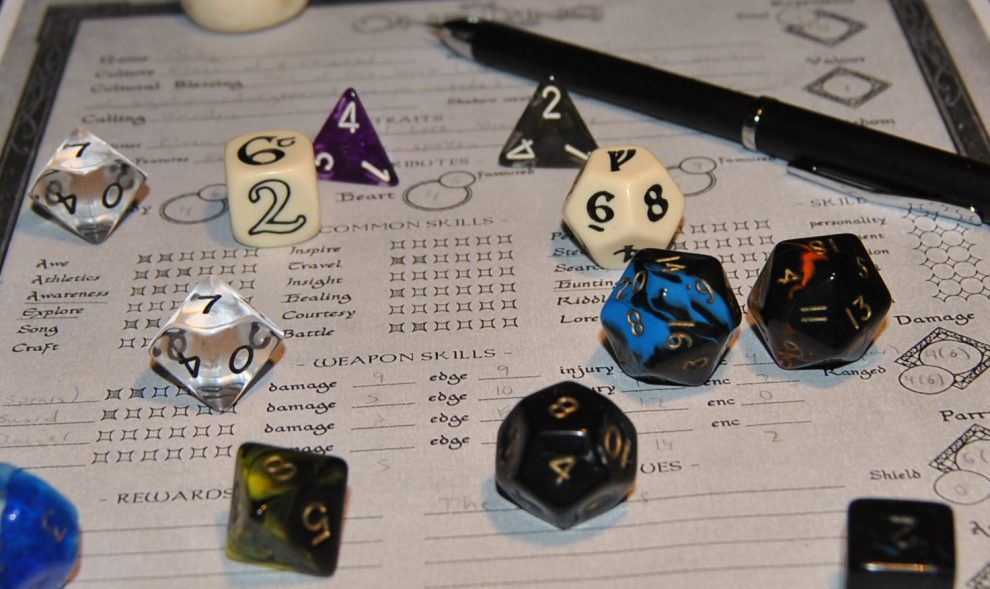 There are a lot of fantastic roleplaying games available to the community at large. Each one represents the passion of a gamer and their desire to express some of their fun and interesting ideas. Everyone has their favorite game or three they spend loads of money on, but sometimes your wallet is tight and there's more you wish you could do to support them. Here are several suggestions to support your favorite designers and their passion projects. 1) Boost The Signal Most designers worth their salt know that social media is an important route to marketing their game. If you enjoy their work, it's a good idea to find them on your favorite social media outlet. If they blog about their product, share it. If they post a new release that you're interested in, give it a like. These simple things have a big impact on raising awareness of the designer’s work. Most Indie designers understand that the chances of them being able to compete with big names in the industry like Wizards of the Coast are small, but they can certainly gather a loyal following. Whenever you comment or interact with their work on social media, you help raise awareness of their products. 2) Be Interactive Many gamemasters wish to be designers as well. There's a good chance that if you are a part of the RPG community, you know of someone that is either in the industry, or wants to break into it. If they ask you to play test something they're working on, or for your general opinion on their work, constructive criticism can be worth its weight in gold. I'm not suggesting that you simply shower their work in praise, nor that you unashamedly bash their ideas into the dirt. Instead, share your opinions in a thoughtful way; it can mean a lot. When a designer shares an idea of theirs with you, it may just seem like a cool concept, but to them it is countless hours of writing, promotion, play testing, and possibly even art and layout. When they share these thoughts with you, they are asking for your opinion on something of importance to them. If you love their work and want to encourage them, engaging with their ideas and material can be one of the most uplifting experiences for a designer. 3) Write a review Websites like DrivethruRPG are filled to the brim with great content. It's surprising to find that even the best role playing games in the business don't have many reviews on their host sites. A review carries a lot of weight for this reason. If you've already purchased a product from your favorite RPG distributor, it can mean the world to them to leave a good review. If you have a blog, it might be worth sharing your opinions there as well. 4) Play The Game This one may seem like a no-brainer but it is very important all the same. Running a game at your friendly local game store, starting one up online, setting up a one-shot at a convention, or just playing at home with a few good buddies will help spread the word. If you love the game, it’ll show when you run or play it, and that enthusiasm can be infectious. Turning gamers to a specific game means that those who enjoyed it will potentially run it for others, spreading the love even further. 5) Talk about it Word of mouth has been a fantastic source of promotion since the beginning. If you’re at a shop or convention with fellow gamers, you can always suggest a game you think they might like. This may seem pretty straightforward, but people often underestimate how much their word is worth, especially to those with similar interests. As you probably know, gamers are a passionate bunch, and word of an awesome game will spread pretty quickly if someone can spark the conversation. We are all busy people, and dedicating time to support someone else's projects can be a lot. But if you can, take a few moments to help out a designer, as it can make a huge difference. Nathan Carmen is the founder and head writer of the Indie RPG company, Tricky Troll Games. Nathan loves building worlds and improving his craft when he’s not busy parenting. Reach Nathan at [email protected] or check out the TTG website athttps://nathanccarmen.wixsite.com/trickytrollgames Picture Reference: http://www.goldenlasso.net/tabletop-rpgs-tips-for-new-players/ 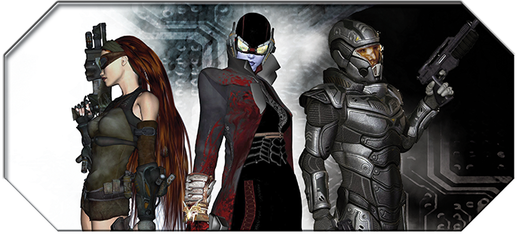 Let’s be honest; we’re all nerds here. And as nerds, we love more than medieval fantasy. We love steampunk, Lovecraft, gothic horror, and we really love sci-fi. So how about we talk about a sci-fi 5E compatible setting inspired by Mass Effect, Phantasy Star, Ghost in the Shell, and more. Chris Negelein, one of the project’s story writers and project managers, sat down to answer a few questions about Esper Genesis. One of the first things that struck me about Esper Genesis was the fantastic art. What might a typical art order look like, and how closely do you work with artists on fine-tuning to what you had in mind? We are very proud of our artists and feel lucky to have them help make our vision a reality, like Santi Casas, did with our race portraits. Our team tries to match up an artist’s talents with subject matter that plays to their strengths. After that, they often turn in art that surpasses our expectations and blows us away. Our art orders also try to be specific while we also provide reference material for inspiration. The more you provide in the beginning, the more it smooths the process in the long run. We pay special attention to our covers, it’s the first impression you’re making with a player. So we work closely with our artist to get the look just right. I think when you see our covers you can tell the effort pays off. But it might surprise people on how easily great art can be buried on page with poor presentation. So our awesome graphic designer, Brian Dalrymple, makes that awesome art really pop with great backgrounds and layout. Aside from its popularity, why did you decide to base Esper Genesis on 5E instead of another system that already caters to science fiction, such as Starfinder, Cortex, or What’s OLD is NEW? Well, it breaks down into two parts. The first is that we were simply working and playtesting Esper Genesis long before most of these games were even announced. For a time, Esper Genesis was going to be its own rule set, but then the flexibility and compatibility of 5E changed our minds. It’s much more flexible than many people give it credit for and it invites lots tinkering for fun. Lots of GMs already do that with 5E but only for their fantasy games. We had a blast taking it one step further! Our main game designer, Rich Lescouflair, is also a Guild Adept for the DM’s Guild. He understands the mechanics and philosophies behind 5e. He’s also our world architect. So if you love the rules and the world, he’s the mastermind behind both. Everything in the galaxy revolves around massive structures called Crucibles, which power spaceships and heroes, and have mysterious origins. Are you willing to give up any secrets about the Crucibles? Do you have any plans to publish adventures in which heroes can explore the nature of them? We have some deep lore about the Crucibles, but right now there’s so much more going on in the Silrayne Arc that needs the immediate attention of the PCs, the heroes, of the setting. Though, that doesn’t stop a GM from doing his own thing with the Crucibles in the meantime. It seems as if the act of using Crucibles to power individuals (esper genesis) is new to the galaxy. What ripple effects is this discovery having on the galaxy? The tragedy that ravaged Eldor when a nearby Crucible was activated happened in our Middle Ages and it spawned two different species, the noble PC race of Eldori and the imperial Lorendi. For humans, the technology and powers of the Crucible gave us FTL, but also sparked a horrible war. So it seems the pattern is that while the Crucibles give sentinent species the power to reshape the galaxy, the end results -- whether wonderful or terrifying -- are the consequences of their (and the PCs) actions. Space combat can be tricky to pull off in an RPG. What was your main objective when designing space combat, and can you name some key decisions that helped you accomplish that objective? Our three main goals were: fun, getting the whole party involved, letting the crew’s performance enhance a ship’s overall performance. Funny enough, the turning points in development that really helped get us there also came in a set of three. One concept was the idea of finding ways to link a ship’s station (Pilot, Gunner, and Engineering) to Attributes, Backgrounds and Skills, but not necessarily classes. This means that while one PC might be a better fit in a certain chair on the bridge, your second choice in a pinch won’t be so bad. Just yesterday I was watching an old sci-fi show and nearly every character jumped into the pilot seat at one point or another. You could do that in Esper Genesis right out of the box. The other is to have a PC version of a ship that is modified by which PCs are in control of which combat stations. The same ship can trade off maneuverability with durability depending on who is doing what behind the controls. There’s also a lot of tactical tradeoffs in Crew Maneuvers, where PCs have to work as a team to make sure they can keep the bad guys off balance. My personal favorite is Feinted Stunt, which is a maneuver you see in every cool space opera dogfight. Check out the Esper Genesis Core Manual here. Phil Pepin is a history-reading, science-loving, head-banging, river-running nerd, who would like nothing more than to cuddle with his pups and wife. Picture Reference: https://www.kickstarter.com/projects/113664363/esper-genesis-heroic-sci-fi-role-playing-for-5e 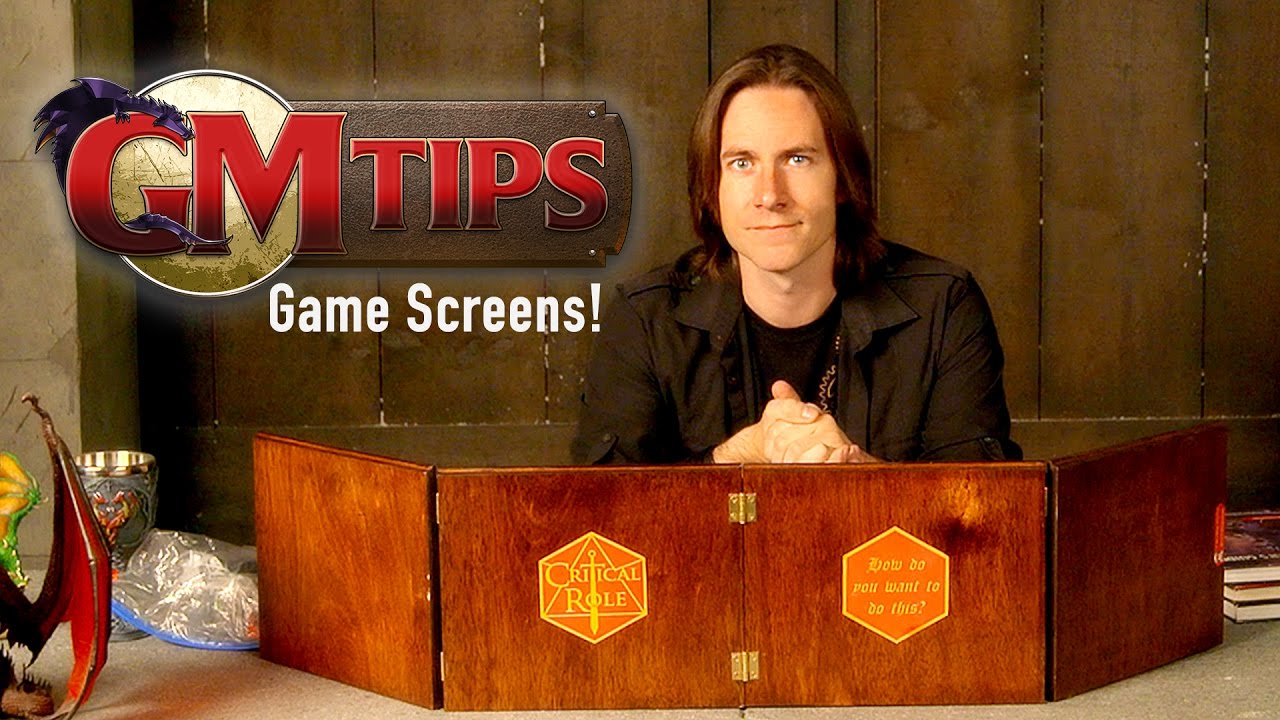 Hands down, my favorite accoutrement for any game is the Game Master’s screen. The evocative art on the players’ side, the tables and reminders on my side to minimize flipping through books as much as possible, and last but not least, the prestige, the unmistakable badge of honor that marks one as the Game Master, the universal sign that conveys to one and all “Yea, I am the creator of worlds! Join me that we may weave our story together!” Unfortunately, it’s exceedingly rare that I find one I would honestly say is perfect. Some of them are mired in superfluous information (looking at you, Original 5e Screen), some of them don’t have all the information you want, (I still have to dig out the book every time I need to see the Renown charts for Werewolf the Apocalypse 20th Anniversary) and some of them just aren’t right. The Paizo Pathfinder GM Screen would be damned near perfect if it wasn’t only available in Portrait orientation. Personally, I vastly prefer Landscape, it makes it far easier to see the map and reach for minis if I’m using them, and affords me much more real estate at the table. Trying to keep my notebook, GM books, and laptop organized behind a Portrait screen can sometimes be an exercise in frustration at our table. As a result, I’ve recently segued into what might be a strange sub-hobby within RPGs, creating my own custom screens for my personal use. It isn’t terribly difficult either. For the most part, all that’s required is a pdf of the rules, image editing software like Photoshop, (or the free alternative Gimp) and access to a printer, which are usually available at the local library if you don’t have one at home. 1) Figure Out What Will Actually Comprised Your Screen The first step is to figure out what the “screen” part is. The Cadillac option is to spring for a The World’s Greatest Screen from Hammerdog Games (not sponsored, I’m just a big fan). I bought the landscape one years ago, and since I use it in just about every game I run I can easily say it’s the best $30 I’ve ever invested in the hobby. TWGS is a durable, high-quality vinyl screen with four clear pockets on each side to hold any inserts the GM wishes, swappable at any time. It’s even compatible with wet erase markers, so you can stick a sheet of graph paper in it and it doubles as a battle mat. Plus, when properly adorned with player side art, it just looks slick as hell at the table. Of course, for those looking for a cheaper alternative, it’s a simple matter to simply construct a screen. Speaking from experience, I don’t recommend using cardstock for the body. It’s far too flimsy and has a hard time standing up even without having a fan or AC going. Conversely, cardboard that’s too thick will make it difficult for your screen to close properly. For me, the gold standard is the type of thin cardboard used for 24 packs of soda cans. After you’ve constructed your screen panels, cut the cardboard with about an extra ½ of an inch on all sides. Affix the front and back panels to the cardboard around the edges with 1” Masking Tape (Painter’s Tape, it’s far more durable and flexible than scotch tape and won’t lose adhesion as easily) Tape the panels together, and then add one more layer of tape around the edge of the entire screen to seal it together. Fold it carefully, (you might have to place it under a stack of books for a while to get it to behave) and you’ll have a lightweight, flexible, durable screen that will last a very long time. Back before the release of 5e, Fourth Edition DM screens were difficult to find (at least in my area) and commanding ludicrous prices on Ebay and Amazon. I used this method to make myself a DM screen in 2011 and it’s still in excellent condition today. If you use this method, however, I highly recommend building a Landscape screen. The lower center of gravity and having longer panels to support itself will make it far more stable and nowhere near as easy to blow over if you happen to be playing in a room with a strong fan. 2) Screen Grab The Necessary Information Once you’ve figured out what information you want to feature on your screen, the next step is to turn the information you want into a jpeg or other image file usable by your image manipulation software of choice. Open your pdf in your pdf reader of choice and take a screenshot (the Print Screen key by default on a Windows PC), then paste the image into Microsoft Paint or similar program. Your screen grab will appear and you can save it as a jpeg. At this juncture, saving your jpegs into a dedicated folder will help make the process go far more smoothly as you’ll probably end up with quite a few. The most important part of this step is trying to screenshot the pdf at an appropriate size. While you’ll have full autonomy to resize everything later, you won’t be able to do too much before the text starts looking distorted and blurry. Personally, my GM screen is equivalent to my notes for me, so I’m not terribly picky about what it looks like so long as I can read it. Of course, different folks will have different sensibilities on the matter. 3) Create An 8.5” x 11” Project Open a new 8.5 x 11 inch project (The size of an average sheet of paper) in your image manipulation software. Which measurement corresponds to height and width obviously depends on which style of screen you intend to create. As you begin to arrange your screen panel, consider the fact that the final product will actually print out slightly smaller than what you see here, as even printing with the “Fit to Page” option enabled will leave you with a small margin around the edges of the page. 4) Place Linked Your Images Import/Place your collection if jpegs into the project, trimming them as needed with Selections, Cropping, etc. The actual procedure for this will vary based on what program you’re using, so if you’re unfamiliar with the practice, searching Google for a tutorial is unfortunately the best advice I can give. Arrange your images as you see fit, but keep in mind what I said about text becoming distorted if you attempt to transform it too much. When you’re finished, save your screen panel as a jpeg itself, and start constructing the next panel. 5) Print And Assemble Print out the finished panels for your screen and either insert them into your screen of choice or assemble them as directed previously. 6) Player Facing Art This is the most fun part, decorating your screen so the entire room knows what kind of pro GM they’re dealing with! When it comes to finding art for your screen, bigger is better. I’m sure most people know by now what happens when you resize a small image to be much bigger than intended. Simplify your life by searching for Wallpapers, they’re large enough and can be proportioned to the size of a sheet of paper without looking distorted. Paizo.com has a great selection of Fantasy and Sci-Fi wallpapers and other appropriately sized illustrations to inspire your players, and of course, a good old fashioned Google Image search for Fantasy Wallpapers, Horror Wallpapers, Cyberpunk Wallpapers, etc. will yield an embarrassment of riches no matter what genre of gaming you prefer. For best results, print your player facing art on cardstock. It will absorb all that ink better than regular printer paper and make the images noticeably more vibrant, whereas images printed on regular paper are often marred with lines as the printer spits it out little by little. Conclusion Yeah, it’s a little bit of work, but when you have a GM screen perfectly tailored to give you the exact information you need when you need it, the results are well worth it. At GenCon 2016 I had the honor of running Pathfinder Society in the Sagamore Ballroom, a giant event with over 150 tables all celebrating their love for the game at once. It’s truly a sight to behold. In an enormous, packed room filled with some of the best and brightest Game Masters the Paizo community has to offer, I still had complete strangers come up to me to complement and ask me about my screen because it stood out from every other one. My greatest pride that weekend was when players enjoyed the games I ran, but that was a very close second. Chaz Lebel is a fiction author, freelance writer and member of Caffeinated Conquests, a YouTube channel dedicated to nerd comedy and tabletop gaming. He and his team once produced some promotional videos for High Level Games that they probably wish they could forget. Chaz can be found on Twitter @CafConIsOn Image Resource: https://www.youtube.com/watch?v=YRMVTmbe-Is 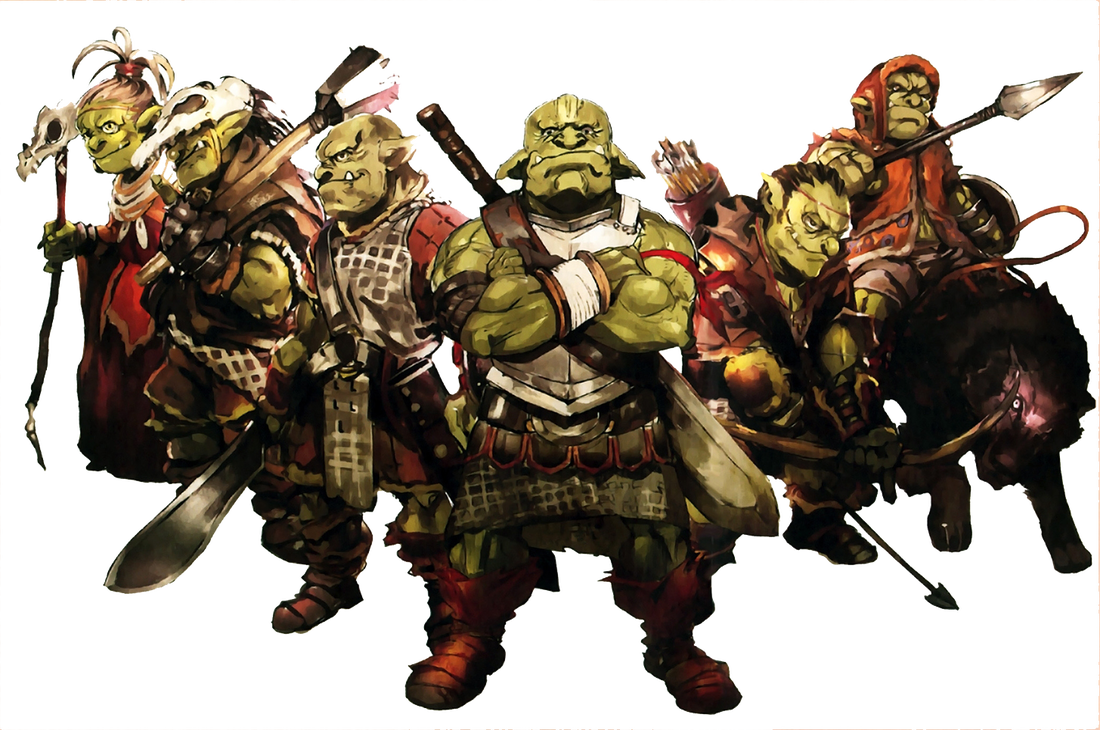 Editor’s note: High Level Games is much more than listicles with captivating headings designed to rope you in! We’re a group run by roleplaying enthusiasts, for roleplaying enthusiasts. Help us grow by supporting our patreon, and get access to cool stuff, such as one page adventures, and much more! Plus the more that we are supported, the more content we can churn out - it’s a win-win. There are a lot of monsters in the 5th edition monster manual, but Wizards of the Coast have deliberately given us a larger array of monsters instead of lots of options for specific monsters. Gone are the 14 different goblinoid options that 4th edition had. However, with a few easy steps, you can provide a cool twist to the baseline stats to create some interesting opponents, whether they are lowly goblins or powerful devils! Check out the five templates I have provided below. Note: These suggestions are quick, simple, and brief, but as such cannot possibly be perfectly suitable for all combinations of enemies. Where required, feel free to tinker with these values as you see fit, like the fine Dungeon Masters you are. For example, the CR increase is on the basis of a creature of a CR of at least 1. If they have a CR of half, or less, add the other bonuses, and use the Dungeon Master’s Guide, or an online CR calculator, to work out a more appropriate rating. 1) Combat Champion In any good band of warriors, there is always the combat champion - unmatched and unrivalled in skill and prowess. CR Increase: +3 Hit Point increase: +45 Attack Bonus Increase: +2 Legendary Resistance Increase: +1 New Action: Multiattack. If the creature already had multiattack, they get one additional attack New Bonus Action: If the combat champion reduces an enemy to 0 hit points, or scores a critical hit in combat, they can use their bonus action to make one additional attack this turn. New Reaction: Add +3 to its armour class against one attack 2) Skirmisher It is much harder to slay your foe if you can never quite keep up with it. CR Increase: +2 Hit Point increase: +25 Attack Bonus Increase: +3 Movement Speed Increase: +10ft New Action: The creature makes a melee or thrown weapon attack, and can then move 10ft. New Bonus Action: Can Dash or Disengage as a bonus action New Reaction: When they are hit by an opportunity attack, can use their reaction for it to miss instead. 3) Sharpshooter The most dangerous attack is the one you don’t see coming. CR Increase: +2 Hit Point increase: +10 Attack Bonus Increase: +5 Attack Damage increase: +5 New Action: The creature can make a ranged attack, with a -5 penalty to the attack roll, but with a +10 bonus to damage New Bonus Action: Take Aim, attacks made this turn cannot be at disadvantage, and have a further +5 bonus to hit. New Reaction: Can use a reaction to fall prone. 4) Shaman Goblins who play with fire are infinitely more dangerous than those who stick to clubs. CR Increase: +2 Hit Point increase: +10 Attack Bonus Increase: +2 Spell Save DC: +2 higher, if it has one. Otherwise, give it a DC as per the challenge rating recommendations table in the DM’s toolbox page of the Dungeon Master’s Guide. NOTE: (Damage can be changed to Cold, Thunder, Lightning, etc, based on whatever thematic approach you want for the shaman. You could also swap the 15ft x 15ft blast spell with a 30ft cone if you prefer that.) New Action: Elemental Blast, Targets a point within 45ft of the shaman, all creatures in a 15ft x 15ft area must take a Dexterity saving throw. Affected creatures take xd8 fire damage on a failure, half on a success. X is equal to 1 + half of the creature’s challenge rating (rounded up). For example, a CR5 shaman would deal 4d8 fire damage on a failed save, half on a success. New Bonus Action: Elemental Bolt, Spell attack roll, range 60ft, on a hit, it deals xd6 fire damage. X is equal to 1 + half of the creature’s challenge rating (rounded up). For example, a CR9 creature’s elemental bolt would deal 6d6 fire damage. New Reaction: Can use a reaction to cast Absorb Elements, at will. 5) Bodyguard There’s always that one guy who gets in the way. CR Increase: +1 Hit Point increase: +25 Armour Class Increase: +1 New Action: The Bodyguard can use an action to attempt to break a grapple between an enemy and an ally who are within 5ft of him. The bodyguard has advantage on this roll. New Bonus Action: Defend - while the bodyguard is within 5ft of a target ally, attack rolls against the target have disadvantage until the start of the bodyguard’s next turn. New Reaction: When an enemy declares an attack roll against an ally who is within 5ft of the bodyguard, the bodyguard can use its reaction to instead force the attack to target it instead. What do you think of these templates? What templates would you want for your enemies? Let me know in the comments! Peter is an avid dungeon master, role-player, and story teller. When he's not running homebrew campaigns, he is creating new worlds, or he is reading and writing fantasy stories, forever immersing himself in the gaping black-hole known as the fantasy genre. Picture Reference: http://overlordmaruyama.wikia.com/wiki/Goblin_Troop |
All blog materials created and developed by the staff here at High Level Games Archives
April 2023
Categories
All
|
Proudly powered by Weebly
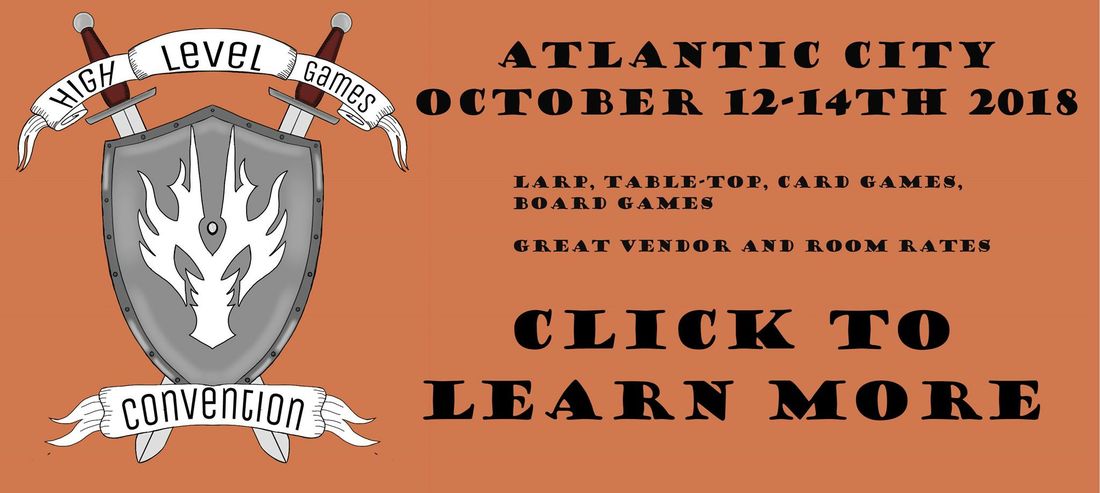
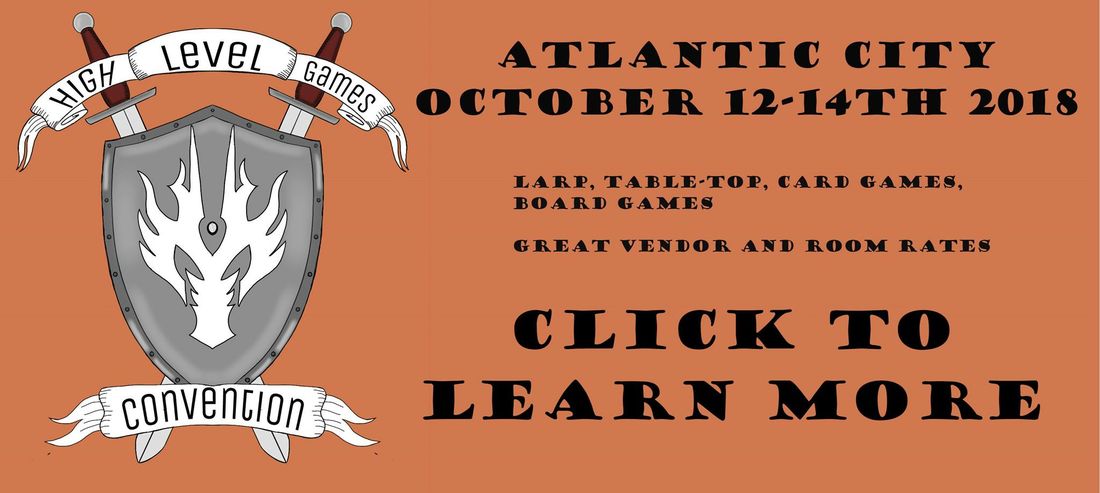

 RSS Feed
RSS Feed